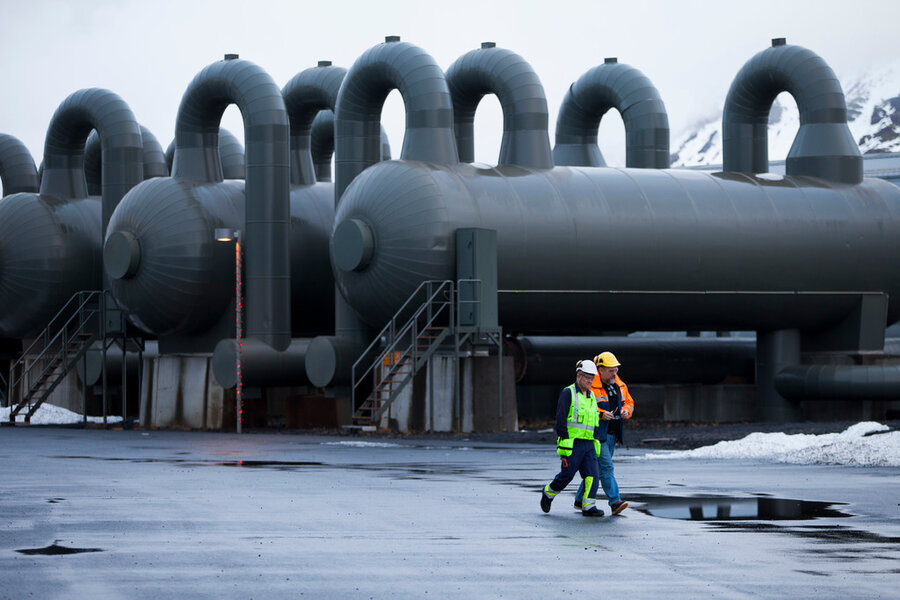A new unity on solutions for climate change
Loading...
Is the political climate over climate change finally changing for the better in Washington?
Perhaps, if you listen to the buzz about a bipartisan effort in Congress to take action on carbon emissions from the use of coal, oil, and natural gas.
In February, lawmakers of both parties supported a provision in a budget bill that provides tax credits for the emerging technology of capturing carbon emissions from industrial and power plants before the gas enters Earth’s atmosphere.
Then this week, in another show of consensus on climate change, a Senate panel passed a measure to ensure federal agencies coordinate on the building of pipelines to transmit carbon emissions for storage or other use.
In addition, a report by a think tank established by President Barack Obama’s former energy secretary, Ernest Moniz, stated that the tax credits “are a critical step forward and will enable substantial emissions reductions for many facilities, especially industrial sites.”
For years the subject of carbon capture and storage (CCS)has been politically charged. “The Right underestimates the magnitude of the problem [of developing CCS technologies]; the Left underestimates the magnitude of the solution,” says Howard Herzog, a researcher at the Massachusetts Institute of Technology.
But that political debate over CCS has run into a stubborn fact: In the past three decades, the world’s use of fossil fuels as a proportion of total energy consumption is still the same – about 80 percent. Despite progress on renewable energy and conservation, humanity must recognize its dependency on dirty fuels for now and act to clean up their use.
The solution to reducing emissions “is not [a choice between] renewable energy or carbon capture; it’s a combination of both,” says Niall Mac Dowell, who models low-carbon energy systems at Imperial College London. “It’s everything, all at once, now.”
Currently 17 CCS demonstration projects around the world are capturing nearly 40 million tons of carbon dioxide annually. But that’s not making much of a dent: The world’s energy industry emits 32 billion tons. Various technologies to solve the problem are at roughly the same stage today as solar and wind were 20 years ago, says Julio Friedmann, one of the authors of a 2017 United Nations Environment Program report on global options for emissions reductions.
“We have to scale up all [carbon] removal approaches. All of them have limits. All of them are nascent,” he says. “All of them have some mix of technical or societal or political or financial issues. [But] there’s nothing in physics or chemistry that says we can’t scale up.”
The International Energy Agency estimates that the new tax credits could generate $1 billion in new investments in CCS technologies in the next six years. In addition, fossil fuel companies may now adopt the concept of “extended producer responsibility,” or the idea that they are responsible for the “life cycle” of the resources they exploit.
Some environmentalists fear that CCS may be seen as a panacea, an easy answer to climate change that will stunt research into other needed efforts. But every promising avenue for solutions should be explored – and CCS is one of them.
Environmentalist Paul Hawken founded Project Drawdown to combat fear-based responses and instead highlight the myriad ways to combat climate change that are constantly emerging.
“Ninety-eight percent of all climate communication is about the probability of what’s going to go wrong and when. Those probabilities are based on impeccable science, for which we have profound respect, but constant repetition of a problem does not solve the problem. It shuts people down,” he told The New York Times recently.
At Project Drawdown, he said, “we don’t blame, shame or demonize. We don’t use fear as a motivating theme. We explore possibility because virtually all human beings move toward the possibility of a better life.”
The immense benefits that would emerge from a technologically and economically feasible means of capturing carbon emissions make CCS one of the brightest possibilities in climate science.







